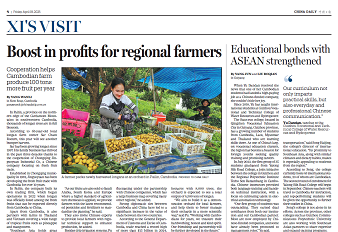Ethnic appreciation inspires stylish designs
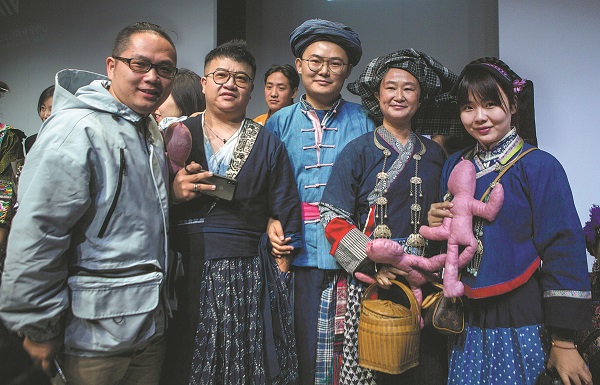
Wei Xianglong (center) poses with several of his colleagues after a show featuring his collection of Bouyei-style clothing during the 2019 China Fashion Week in Beijing. CHINA DAILY
For Wei Xianglong, the unique dyed clothes and textiles of the Bouyei ethnic group have taken him on a lifelong journey, from being a humble craftsman of his ethnic culture to a fashion designer whose outfits have appeared on the runway at international fashion week in Beijing.
From his studio in the city of Duyun in the Qiannan Bouyei and Miao autonomous prefecture, Guizhou province, the 35-year-old designs and makes clothing, shoes, computer bags, tea sets, handbags, backpacks and refrigerator magnets all in the style of his Bouyei ethnic heritage.
Bouyei is one of the 56 ethnic groups in China, predominantly hailing from the Yunnan-Guizhou Plateau.
Wei opened his studio in his hometown after graduating from Sichuan Fine Arts Institute in 2011. Over the years, the popularity of his work and his customer base have continuously grown.
In 2018, he was recognized as an inheritor of traditional indigo dyeing of the Bouyei ethnic group.
Indigo dyeing, as well as batik, tie-dye, brocade weaving and embroidery are essential techniques for traditional Bouyei clothing.
Wei even takes on custom orders.
"One young lady told me she just wanted the most beautiful and expensive piece I had," Wei said, adding that he wasn't surprised because Bouyei people cherish their traditional ethnic clothing.
Another customer liked a pleated skirt so much that she was willing to pay 30,000 yuan ($4,200) for it, Wei said. "We recognize our ethnic culture and cherish its value ... Bouyei people might have at least three pieces of Bouyei clothing at home for important events."
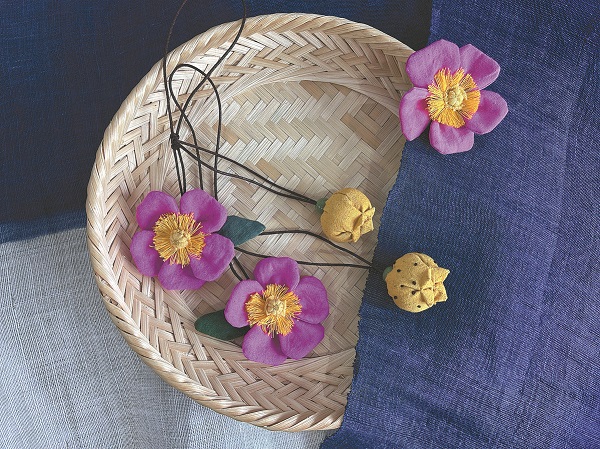
Bouyei ornaments designed by Wei Xianglong. CHINA DAILY
The designer is passionate about his cultural heritage and sees it as a part of his role that he carries forward. "Western creators draw inspiration from their own cultural backgrounds or from Eastern elements for artistic creation. But I want to dig deep into our own culture," Wei said.
Skirts, for example, often represented the economic status of a family in ancient China, according to Wei. To research the history and design of an original pleated skirt, a complex and ornate piece of Bouyei attire, Wei spent a decade traveling to remote villages.
"Most of the time, we could only find a piece of fabric in one village and a section of pattern in another. It was like piecing together a puzzle," he said.
Even the elderly only remembered seeing their grandparents wearing these garments when they were young, but none had been preserved. After nearly 10 years of searching, Wei finally discovered a relatively complete pleated skirt.
He said touching a real pleated skirt is different from merely seeing one in books. To restore it, one must study its craftsmanship and dimensions, Wei explained.
Following traditional techniques such as plant dyeing and hand weaving, and drawing inspiration from the structure of Bouyei traditional clothing, Wei weaves patterns that show a "worshipping of the universe, praise for nature or care for humanity", just as his ancestors did when designing clothes.
He personally likes roxburgh rose, a wild plant whose juice has become popular in Guizhou.
"There is a metaphor that roxburgh rose implies not being humble. It exudes strong self-confidence. It also symbolizes enduring love," he said. "This wild fruit, like the Bouyei people, is born in the mountains with a resilient and confident spirit."
Wei said it's more meaningful to convey the culture of the Bouyei people through creative products than to just superficially apply ethnic elements.
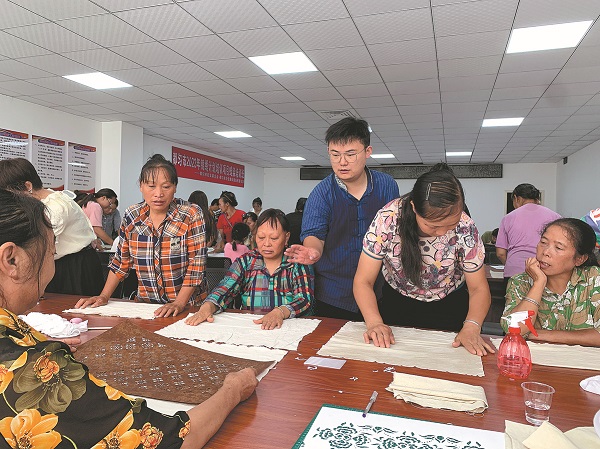
Wei trains women to do indigo dyeing in Duyun city, Guizhou province. CHINA DAILY
To bring Bouyei clothing into the modern era, Wei has also designed patterns to be used on the uniforms of flight attendants, organized a Bouyei fashion show for students, and his team is presenting a new wedding series from this month to Spring Festival.
He also teaches indigo dyeing at colleges and conducts trainings in rural areas, and has been invited onto TV programs multiple times.
"My ideal is to make more people understand this traditional craft and culture, and through my designs make indigo-dyed products more popular in daily life," he said.
Luo Cheng, a member of Wei's studio, said Wei is very meticulous and serious. "He is methodical in his work. He personally oversees everything and is not very tolerant of mistakes," he said.
"Many people said they began to learn about Bouyei through our Wutuwusheng brand. We hope to further promote the culture of the Bouyei and bring this local cultural brand to a larger stage," Luo said.
Liu Boqian contributed to this story.
All rights Reserved. 京ICP备13028878号-8







 Overview
Overview Guiyang
Guiyang Guian New Area
Guian New Area Liupanshui
Liupanshui Anshun
Anshun Qianxinan
Qianxinan Qiandongnan
Qiandongnan Qiannan
Qiannan Zunyi
Zunyi Tongren
Tongren Bijie
Bijie Guizhou commits to culture preservation and rural vitalization
Guizhou commits to culture preservation and rural vitalization Guizhou voice at 2025 national two sessions
Guizhou voice at 2025 national two sessions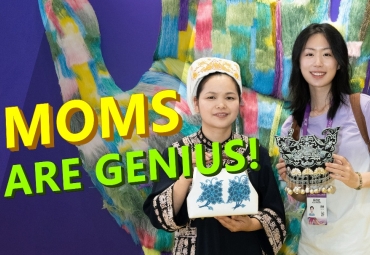 Meet the 'genius moms' at Shenzhen cultural fair
Meet the 'genius moms' at Shenzhen cultural fair 
